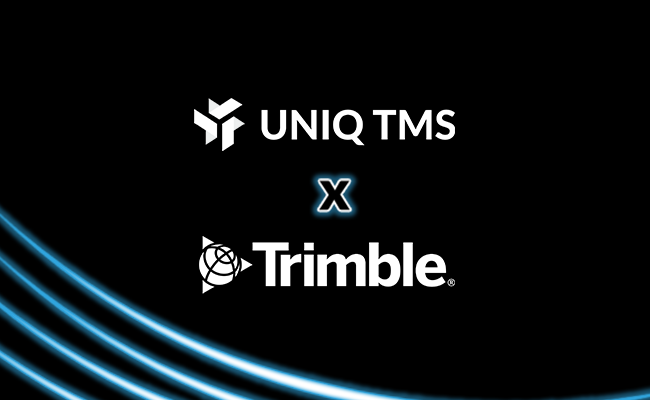
Are you a small fleet looking for an affordable Transportation Management System (TMS)? Look no further than Free TMS, the ultimate solution designed to revolutionize your fleet management operations without breaking the bank. In this article, we will explore the basics of a TMS, the cost factor behind free TMS solutions, evaluate their features, understand their impact on small fleet operations, and provide guidance on transitioning to a free TMS.
Understanding the Basics of a Transportation Management System (TMS)
Before diving into the world of free TMS solutions, let’s first establish what a TMS actually is. In simple terms, a TMS is a software platform that streamlines and optimizes transportation operations for businesses of all sizes. It serves as a centralized hub for managing and tracking freight, providing increased visibility and control over each step of the transportation process.
Transportation Management Systems (TMS) have evolved significantly over the years, incorporating advanced technologies such as artificial intelligence and machine learning to enhance their capabilities. These systems can now predict potential transportation issues, recommend the most cost-effective routes, and even automate communication with carriers and drivers.
What is a TMS?
A TMS offers a wide range of functionalities, including load planning, route optimization, carrier selection, freight auditing, and performance monitoring. By automating these tasks, a TMS helps reduce manual errors, enhance operational efficiency, and ultimately boost your bottom line.
Moreover, modern TMS solutions often come equipped with customizable dashboards and reporting tools that provide in-depth insights into key performance indicators. This data-driven approach allows businesses to make informed decisions, identify areas for improvement, and drive continuous optimization in their transportation operations.
Why is TMS Important for Small Fleets?
As a small fleet, the need for efficient operations and cost-effective solutions is crucial for success. Implementing a TMS can alleviate manual paperwork, streamline processes, and provide real-time insights into fleet activities. By leveraging technology, small fleets can compete on a level playing field with larger counterparts, enhancing customer service and improving profitability.
Furthermore, TMS solutions tailored for small fleets often offer scalability options, allowing businesses to expand their operations seamlessly as they grow. This scalability ensures that the TMS can adapt to the evolving needs of the fleet, providing long-term value and support for sustainable growth.
The Cost Factor: Exploring Free TMS Solutions
One might think that something as comprehensive as a Transportation Management System (TMS) must come with an exorbitant price tag. However, the market offers a range of free TMS solutions tailored specifically for small fleets. Let’s dig deeper into how these solutions manage to be both cost-effective and efficient.
Transportation Management Systems (TMS) have revolutionized the way logistics and supply chain operations are managed. They streamline processes, optimize routes, and enhance visibility, all of which contribute to cost savings and improved efficiency. Free TMS solutions bring these benefits within reach for small fleets that may not have the resources to invest in traditional, high-cost systems.
How Can Free TMS Solutions Be Affordable?
Free TMS solutions are often web-based, eliminating the need for expensive hardware or software installations. By operating in the cloud, these solutions can be accessed from anywhere, providing flexibility and scalability without the hefty upfront costs. Additionally, free TMS providers often generate revenue through advertising or premium features, allowing them to offer their core services for free.
Furthermore, these free TMS solutions frequently offer basic features such as load optimization, shipment tracking, and reporting capabilities. While they may not have the advanced functionalities of paid TMS systems, they provide a solid foundation for small fleets to manage their transportation operations efficiently.
Potential Limitations of Free TMS Solutions
While free TMS solutions offer a great starting point, it’s essential to consider their limitations. Free versions may have restricted functionality or support compared to their paid counterparts. Additionally, as your fleet grows, you may need to upgrade to a premium plan or switch to a different TMS provider to meet evolving needs. Nevertheless, these limitations are outweighed by the initial affordability and flexibility offered by free TMS solutions.
It’s important for businesses considering free TMS solutions to assess their current needs and future growth projections. While these solutions provide a cost-effective entry point into transportation management, understanding their limitations and planning for potential transitions to more robust systems will ensure continued operational efficiency as your business expands.
Evaluating the Features of Free TMS Solutions
When considering a free TMS solution, it’s crucial to evaluate the features they offer to ensure they meet the specific requirements of your small fleet. Let’s explore some key features to look for:
Key Features to Look for in a TMS
- Load Planning and Optimization: The ability to optimize routes and efficiently allocate resources is essential for maximizing fleet productivity.
- Real-time Tracking and Visibility: Ensure the TMS provides real-time updates on freight movement and effective communication with drivers.
- Automated Documentation: Look for features that minimize paperwork, automate billing, and simplify the invoicing process.
Additional Features of Free TMS Solutions
- Carrier Management: Evaluate the TMS’s ability to manage carrier contracts, rates, and performance for better decision-making.
- Analytics and Reporting: Access to robust reporting and analytics features can provide valuable insights for optimizing fleet operations.
- Integrations: Check if the TMS integrates with other systems such as accounting software, fuel optimization tools, or electronic logging devices.
Enhanced Visibility and Control
One of the key advantages of a comprehensive TMS solution is the enhanced visibility and control it provides over your fleet operations. With real-time tracking and monitoring capabilities, you can proactively address any issues that may arise during transportation, ensuring timely deliveries and customer satisfaction.
Scalability and Flexibility
Another important aspect to consider when evaluating TMS solutions is their scalability and flexibility. A robust TMS should be able to grow with your business, accommodating an increasing number of vehicles, routes, and shipments without compromising efficiency. Additionally, flexibility in customization options allows you to tailor the system to meet your unique operational needs, enhancing overall performance and productivity.
The Impact of Free TMS on Small Fleet Operations
Now that you understand the features offered by free TMS solutions, let’s explore their impact on small fleet operations.
Small fleet operations are the backbone of many businesses, handling crucial transportation needs efficiently and effectively. The introduction of free Transportation Management System (TMS) solutions has revolutionized how these fleets operate, offering a range of benefits that enhance their overall performance.
Operational Efficiency with Free TMS
Implementing a free TMS can significantly improve operational efficiency for small fleets. By automating manual tasks, such as load planning and dispatching, you can free up valuable time and resources. Real-time visibility into your fleet’s activities allows for proactive decision-making and effective problem-solving, leading to improved on-time performance and customer satisfaction.
Furthermore, the integration of free TMS into small fleet operations fosters a culture of innovation and adaptability. With streamlined processes and enhanced communication channels, teams can collaborate seamlessly, driving productivity and operational excellence.
Improved Fleet Management with Free TMS
A free TMS provides small fleets with the tools necessary to manage their fleet effectively. By optimizing routes, improving driver communication, and streamlining administrative tasks, you can reduce costs, minimize errors, and enhance overall fleet management capabilities. Additionally, the valuable data insights gathered from the TMS can drive continuous improvement and strategic decision-making.
Moreover, the implementation of a free TMS empowers small fleet operators to stay ahead of industry trends and regulatory requirements. By leveraging advanced analytics and reporting features, businesses can identify patterns, trends, and opportunities for growth, ensuring long-term sustainability and success.
Making the Switch: Transitioning to a Free TMS
Ready to make the switch to a free TMS? Here are some practical steps to implement a free TMS within your small fleet:
Transitioning to a free Transportation Management System (TMS) can be a game-changer for small fleets looking to streamline their operations and improve efficiency. By leveraging a free TMS, companies can automate processes, optimize routes, and gain valuable insights into their fleet management practices. The decision to switch to a free TMS signifies a commitment to embracing technology to drive business growth and enhance customer satisfaction.
Steps to Implement a Free TMS
- Evaluate Your Needs: Identify your fleet’s specific requirements and evaluate different free TMS solutions accordingly.
- Data Migration: Ensure a smooth transition by preparing and migrating your existing data into the new TMS.
- Training and Onboarding: Provide comprehensive training to your team members, ensuring they fully understand the TMS’s features and functionalities.
- Test and Optimize: Conduct thorough testing and optimization to ensure the TMS is aligned with your fleet’s operations.
Implementing a free TMS involves a strategic approach that considers not only the current needs of the fleet but also its future growth potential. By customizing the TMS to suit the unique requirements of the fleet, companies can maximize the benefits of the system and drive long-term success. Additionally, fostering a culture of continuous improvement and innovation within the organization can help in harnessing the full potential of the free TMS.
Overcoming Challenges in TMS Adoption
Transitioning to a new TMS can come with challenges, such as resistance to change or a learning curve for adaptation. To overcome these challenges, communicate the benefits of the new system to your workforce, offer dedicated support and training, and gradually phase in the TMS to minimize disruption.
Furthermore, creating a feedback loop where employees can share their experiences and suggestions for improving the TMS implementation process can enhance buy-in and collaboration. Embracing a change management strategy that focuses on clear communication, stakeholder involvement, and recognizing milestones can pave the way for a successful transition to a free TMS.
Free TMS solutions offer small fleets a cost-effective way to optimize their operations, improve efficiency, and stay competitive in the rapidly evolving transportation industry. By understanding the basics, evaluating the features, and implementing a free TMS, you can take your small fleet to new heights of success without breaking the bank. Embrace the power of technology and propel your fleet towards a more efficient future with Free TMS today!
Ready to Transform Your Transportation Management?
Discover how Uniq TMS can streamline your logistics operations, enhance efficiency, and boost your bottom line. Click here to learn more and explore our innovative solutions designed to meet your unique transportation needs.

